Terri Dowell-Dennis Flip Dolls: Material Meaning, Appalachian Craft and Foundational Stories5/23/2017 This is the seventh post in a series of articles about my current project: REVISIONING FLIP DOLLS. I received a Conant Grant from the Potomac Fiber Arts Guild and as part of this project, I worked with homeless women at N. Street Village in DC making flip dolls; interviewed professional artists who make flip dolls, and have been making my own flip dolls. And more... 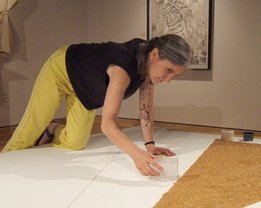 Terri Dowell-Dennis is a recipient of two North Carolina Arts Council Fellowships (2000, 2006), a Regional Artist Project Grant (2000), and a North Carolina Arts Council Project Grant (1993). She is married to photographer W. Cameron Dennis, and they have two sons, Ian and Max. Terri has worked in the field of Museum Education since 1990. Currently she works part time as Associate Curator of Education for the Weatherspoon Art Museum at the University of North Carolina at Greensboro. She received her Bachelor’s Degree in Art Education from Appalachian State University, Boone, NC, her MFA in sculpture from Clemson University, Clemson, SC, and a MALS degree, in 2011, from Wake Forest University, where she focused her studies in religion and humanities. For the Flip Doll Project interview, we spoke through video conferencing. Terri sat in her spacious and airy North Carolina kitchen, where some of her flip dolls hang on the wall behind her. We had a lively conversation, encompassing many topics, which could have gone on much longer and ranged into many more directions. Terri spoke of her lifelong interest in sewing and her sense that materials, such as wood, leather or fabric “have a history and carry meaning.” We talked about her interest in spiritual and religious traditions and how these contributed to her unique take on flip dolls. She sees her flip dolls as a response to their origin as a “racist relic” of the past, transforming them “from figures in opposition, to parts that make a whole.” Raised in a fundamentalist Christian tradition, she continues to be inspired what she calls “foundational stories” and the ways in which these stories affect our attitudes towards many aspects of our lives, including the treatment of women, gender roles and our place in the world, though she doesn’t consider herself a religious person now. She finds the topsy turvy, or flip doll, an ideal vehicle to depict dualities such as good and evil, Adam and Eve, man and woman. She spoke of the artists who inspire her, from contemporary performance artists such as Janine Antoni to self-taught artists such as Thornton Dial. Yet, she made it clear that she is primarily inspired by traditional craft, especially the Appalachian tradition of her region and by the materials themselves. She shared some thoughts about her artistic process as well as how she manages to keep her artistic vision alive, while also working as a part time Curator and also spending time with family. Traditional “Topsy Turvy” Dolls as inspiration: Erika: What got you into being a doll maker? I know you don’t think of yourself specifically as a doll maker. Terri: I was given a Mammy/little girl doll by my mother-in-law. The first thing that got me into doll making was interest in Appalachian history and culture. I was making corn shuck figures and made one that was a topsy turvy. When I remembered it I pulled it out to show you. E: Tell me about it. What is the hair on the bottom one made of? T: Corn silk hair. Corn shucks and corn silk. Top figure is veiled and the bottom one has a sort of Rapunzel-esque quality-the hair is all braided and falls down beyond the bottom of the skirt. You know, stages of life. E. So that was the first flip doll you made and it was part of a corn shuck series? T: Yes, made in early 2000’s. And I happened to do one that was topsy turvy. E. Yes. T. This one was made in response to doll that I have that belonged to my mother in law. I knew that it was a racist relic from the past. This was my way of taking that energy and turning it around, and rather than seeing the black and white figures in opposition, to try to make a statement that you have to have both sides in order to make a whole. E. Really powerful, idea that flip dolls evoke wholeness or connectedness… T. At the time I was making them, I was doing a lot of reading about religious traditions and spiritual traditions. And the topsy turvy doll became a vehicle to express my feelings about oneness and wholeness and growing out of this idea of duality. E. Have you read the book Mammy: A Century of Race, Gender and Southern Memory, by Kimberly Wallace Sanders? She discusses some of these ideas. T. Will have to look it up. It’s a wonderful project that you are doing. E. It’s wonderful talking to people who make flip dolls for various reasons. Wallace Sanders, in the book, talks about the Mammy idea, what it meant then, what it means now, and how artists are taking that image and transforming it into a new meaning, as a Mammy with a gun. She connected me with Joyce Scott-she doesn’t make flip dolls but her ideas are so connected to this idea, the black white dolls. T. Yes, I met her. I love the way Scott seduces you with the beautiful beaded work and then punches you with her challenging ideas. Very powerful. E. Yes, again, the duality. T You ask about how I got into making flip dolls-that’s really the way. I make work all the time but sometimes I just see something and it all falls into place. It was that way after making this one in corn and then seeing that I had this one from my family and it opened up another avenue for exploring what that doll is. I played with dolls a lot as a child. I’m really interested in what doll mean to us, they are almost an extension of ourselves and our identities. They express nurture and compassion. They have so much to do with how we learn about relating to other human beings. We think of them as belonging in the realm of childhood. E. Yes. T: I have boys-they played with action figures. Boys sometimes get different lessons than girls do in their play. But one of my sons is almost a doll maker. He makes stuffed figures. E. Interesting. What is the purpose of the figures he makes? T. They are creatures. A cross between sculpture and toys. E. How big are they? T. Some almost as big as I am-five feet. Some small. This one is felted, not needle felted. Some are very complex. He is working on ways to simplify them so he can sell them. (She shows me an example of one of her son’s dolls.) E. It almost has an alien quality to it. (The doll has several eyes across its head.) T. Yes. E. I like what you said about dolls as an extension of ourselves. I’m very connected to idea of dolls reflecting us back to ourselves. When you make a doll, it can reveal things that you don’t see otherwise, like an aspect of yourself. T. This must be powerful in your work with women in workshops. E. Yes. Materials as a source of inspiration: E. Influences? We talked about how there is a thread in your work, an examination of women’s work and women’s roles. T. The other theme is an interest in materials. Materials and objects have a history and a story and they carry meanings. I incorporate interesting materials in my work. E. The materials always have a history? Not store bought, as in the skirt with spoons in them? note: these images can be seen on Dowell Dennis's website, we are referring to her works "100 prints for hunger" where she printed images of hungry children, using used cutting boards as the printing medium and "She eateth not the bread of idleness" in her "Virtuous Woman" series, where she printed the words onto wooden spoons placed into the pockets of black aprons. T. I work on the materials. Whittled the spoons. The cutting board series-they were old boards and used the lines to create prints. E. You chose to use cloth as a material for the flip dolls. Some have bisque fired heads. But you chose to have it all be cloth. T the one I inherited is all cloth and I’ve always sewn. It’s always been a part of my life. And I have some that I’ve started and never finished in wood… E. Wooden flip dolls? T Yes, never finished, maybe some day. And I have prints of topsy turvy images. “Foundational Stories” as an influence: E. Back to influences: are there artists or other influences on your work? T Materials. Stories. poems. Lot of work with the book of Genesis. Very interested in foundational myths. Lot of Adam and Eve imagery. E. Is there an Adam and Eve Flip doll? T. Yes, pink and blue with snake wrapping around. I think of that as an Adam and Eve image. I also have topsy turvy Adam and Eve images in prints. E. So many layers in old stories. I have that interest in common with you. I go beyond and use stories in other cultures as well, uncensored Grimm fairy tales. I made that connection later, once I saw it in my work. I’m also interested in Indian culture. T. Eastern or American? E. Eastern but I just read Braiding Sweetgrass, the Native American theme, by Robin Wall Kimmerer. She studied Native American culture and biology at the same time. She describes how the academic community wasn’t open at first to her bringing the Native American ideas into her work. I haven’t used Native American ideas in my work yet but would like to. T. On a university campus, you run into that bias a lot. I work in a museum in an academic environment and I experience that too, the lack of open-mindedness. Artistic Inspiration: from contemporary to self-taught E. Are there artists who you are drawn to, who you are inspired by? T. I really like Janine Antoni. E. Yes, I know her. T. I love the way she can get at a very deep feeling through simple activities and the way she uses her materials. There’s a lot of artists I’ve been inspired by over the years, even Ad Reinhardt, who uses black in a way that I really respond to. I love traditional forms, such as the corn shuck dolls, the apple head dolls. And I love the self-taught artists, artists who are putting a lot of feeling and passion into what they are making. Thornton Dial is one. E. Have you been to the Visionary Museum in Baltimore? T. Yes, saw a lot of artists who interested me there. E. I share your interest in self-taught and visionary artists. I went to art school late and felt like I had to unlearn some things after being in art school. T. I find that as I get older I really appreciate the self-taught artists much more. Their work cuts to the chase. E. Grandma Layton, this is an artist who you just reminded me of. She came to art late in life. She suffered from depression and a therapist directed her toward contour drawings. Her work is so uninhibited and expressive. T. There’s another artist, Judith Scott, have you seen her art? E. Yes. T. Her art has a lot of power. Also Jackie Winsor. E. Yes, would you think of her as a fiber artist? T. No, as a sculptor. E. Someone gave me a book “50 Women Artists,” I think was the title, something like that, when I was a teenager and Jackie Winsor was in it and she made an impression on me too. T. Yes, I like the idea of labor, of the time spent on the work and how it shows in the work. E. When you do your work, especially the embroidery, there’s that idea of recording hours of labor. T. Thanks. If my work can capture that, it makes me feel good and like I’ve gotten to something. More about Spiritual and Religious Traditions: E. What materials did you use before the corn-husk dolls? T. I worked mostly in wood and I’ve also done pieces in leather. It depends on what I’m trying to aim for, what materials I choose. I’ve made works that use black leather that is gilded with words. Or I’ve made a piece out of brain-tanned leather that was about the first clothing. It’s the book of Genesis and my interest in the bible as a, not that I’m a religious person but I was raised in that tradition. I was brought up in that tradition so I recognize how much we are influenced by those foundational stories even when we don’t believe that we are. There are a lot of attitudes about women that come through for example. Attitudes about a lot of things. E. So many layers here. We could go off in a lot of directions. T. Yes, I feel we could talk for a long time. E. One time I was fascinated with the Gnostic Gospels, the ones that didn’t make it into the bible. T. I’m so glad you said that. The Gnostic Gospels had a huge influence on my thinking. And yes, when you look at that, it’s a whole new ball game. I love that. There’s a wonderful poem that was found with the Gnostic Gospels. It’s called the “Thunder Perfect Mind,” you would like it. E. I don’t know it. T. Yes, you should look it up. It was written by a woman. It was another thing that really influenced my topsy turvy dolls. Duality and wholeness and speaking about the same thing. E. Makes me think of Hildegard von Bingen and also the Chalice and the Blade book, by Riane Eisler. T. I think that the early notions of Christianity were much broader that what has come down to us. I think that what we have are these stories but they are very political. The Gnostics were probably declared heretics. The leaders of the forming religion said, we’re going this way, not this way. E. I saw some of your embroidered images of witches being persecuted. That reminds me of this idea. We’re lucky to be living now. T. Yes better time to be a woman. Terri’s Studio Process: E. What is your process in your studio? And with dolls. T. I still make dolls occasionally when it feels like the right thing to do. But about my process in the studio. I work at a museum and sometimes when I have an idea I have to make a sketch and record it until I have time to work on it. But when I’m not in that mode, I just go. And I work on what comes up. And sometimes it takes a long time for something to filter out and become the thing that I discover through the process. More about Flip Dolls and their Meaning and History: E. Does your art, do your dolls make a political social statement? We talked about this a bit already. T. Sometimes my art makes a political statement, sometimes not. E. What are your ideas about the history of flip dolls? T. The original flip dolls were a way for slave women to have an image that looked like themselves. The flip was a way for them to conceal this from the master. But I don’t know that for sure. People may not know or remember why they were originally made. I read about this interpretation in an article a while back. E. Do you have that article? I’ve heard the opposite take on it-that the white side of the doll had to be hidden. I’d be curious to see. Other theories were that the slave mothers made the flip dolls as a way to cope with having to care for black and white kids at the same time. T. That sounds plausible. E. Another theory posits the dolls as a subversive idea. And also symbol of connectedness between the black and white women. Sometimes the white slave owner women, who may have been illiterate themselves and with little outside contact, may have had their most meaningful relationship the black slave woman. T. It’s all speculation. E. Even difficult to know in the research whether the dolls were actually made by slaves. Wallace Sanders talks about how the flip dolls were later owned by white girls and used in a way to perpetuate views of whites superiority to blacks. These later dolls were more of a black Mammy and a white child. Complicated because at the same time, often the Mammy was seen as a better maternal figure than the white children’s own mother. T. Yes these ideas are around even now. Did you hear the story in the Atlantic of a woman from the Philippines who was brought to this country as a slave? Off the subject but yes, her name was Lola. She was kept as a slave throughout her life. Interesting to think that this was perpetuated up to the present in a quiet way. Craft vs Art: E. And in other countries more overtly. What do you see as the role of craft vs art in your work? T Things that are designated as craft are often traditions carried on by women whereas if it’s painting or sculpture, they were historically seen as created by men. I tend to think that art can be made of anything, Anything that transcends its making is art to me. E. Interesting to look at the historical connection of gender to art vs craft. E. What about symbols or metaphor in your art? You talked about Adam and Eve and Genesis. T. Opposites. Adam and Eve, life and death, dark and light, good and evil. And in regard to the dolls, it’s ideas where you really can’t have one without the other. Male and female, and now you can complicate that a lot, and I’ve been working on that recently. I’ve been doing some work that questions the idea of gender being just dual. E. I think that’s the cool thing about the flip doll, you can add more. You can have two heads or front and back of the head. Like the Little Red Riding hood flip dolls where the grandmother has the wolf on the back of her head. Do you have these on your website? The ones that question gender? T. Yes. I have one of the prints that’s about this idea. More about Christianity and art-how to communicate so you are understood. E. Does your personal experience come into your process? T. Yes, the way it comes in is that I was brought up in a very fundamentalist family. That’s where my interest in gender roles and in the foundations of religious traditions come in. I’m interested in what they teach us and how they came to be. It’s a huge interest of mine. E. Very powerful. T. A lot of times in the world of art, people don’t want to talk about religion. E. Yes it seems to me to be true particularly about Christianity. Sometimes it seems like if it’s Buddhism, it’s more accepted somehow. But Christianity, it’s no no no. T. It’s seen as you are putting judgment on people or that you are a fanatic of some kind. I think a lot of people-religion has an uncomfortable place in their mind and they haven’t really mined it. E. It’s a really important and courageous role that you are taking. Have you had people to your art respond in a way that’s difficult? T. I have to be careful to communicate very clearly so that I’m not misunderstood. E. What have you found that helps with that? T. It’s all in the language that you use to talk about the interest. It’s important to, my background is Christian so I am interested in all traditions. E. So…open-mindedness. T. I think so, and not anti-science. E. Right. We’re almost out of time. Do you collaborate other artists, teach and do workshops? T. I haven’t had the opportunity to collaborate. It’s on my wish list. I try to encourage this in my work in the museum. When I retire. Vision for the Future: E. What’s your dream for the future? T. A couple. I dipped my toe into the idea of performance. And the idea of collaborating with other artists. There’s a long tradition of artists working with dancers, actors, writers. I would really like to explore that. I’d also like to do a residency somewhere and be with other people who are making. Thank you, also nice to talk to you. Dealing with Creative Blocks:
E. Any creative blocks and what do you do, if so? T. Of course yes. I fret about them because making is what keeps me me. Those are the times when I just go into the studio and just play around. Sometimes it takes a long time to find something to say or for me to do something that puts me on a path that I want to be on. I have to be patient. E. Do you have things going on at once? T. Yes, because of the nature of time that I have. I start things and sometimes it’s a year before I get back to them. Because of the nature of my museum work. I try to take notes. But if it falls away, it falls away. If it’s good, it comes back. E. That’s a helpful philosophy, not to get too worried about what falls away. Do you have advice for homeless women making flip dolls? T. I so loved what you said about how what you make can speak back to you, could bring up what is below the surface or subliminal in some way. And I think dolls have that capacity to mirror and reveal parts of ourselves. The whole art-making process has that capacity. I think that could be really useful in working with homeless women, to help them learn things about themselves. E. Is there one doll where you could describe the process in more detail? Did the flip dolls happen in a condensed time frame or were they one of the things that you left and came back to? More about the creative process: T. Conjoined hearts one started and then I lived with the thread drawing (of hearts) on the surface before I realized I wanted it to be really rich and pop out. I went in and embroidered the hearts more fully. I did one called Kali/ Medusa. In looking at images I realized that both Kali and Medusa, are very powerful feminine figures from different cultures, both fearsome. There’s a lot of female energy in those figures that’s not the traditional energy that is condoned for women. And there are all these images of both of them, depicting them with their tongue distended. The similarity made me think what would happen if I put those together. They have so much capacity to speak about life and death. That one is on my website. A friend owns it now. That one is an unusual one for me because I made all these snakes coming out of Medusa’s head. It had a different kind of presence. E. I’ve made Kali but not Medusa images, no, did do one of Medusa decorating a dragon body. But I never thought of them together. I Read the story of Medusa. She tends to be seen more exclusively negative. Kali in the Indian culture is seen more from both sides. T. I did another, this time a print of Athena/Medusa. Athena, a warrior, is seen as a more masculine figure. She was born out of her father’s head. Medusa is a more feminine power. E. Wondering about the Greek version of Athena, she seems a bit more feminine? T. Not sure, But Athena is important in the pantheon, but not very feminine. She springs from the mind. E. Both are subversive. T. Yes. The head of Medusa is on Athena’s shield. It’s like a kind of murder of the feminine-in my interpretation. E. So much here. Is there anything else? Is it OK to use this in my blog? Will you send some flip doll images? I love your work and it inspired me to do this process. T. I enjoy your project too. It’s something that was waiting to be done. E. I’m close to getting a venue. I plan to show my flip dolls, the flip dolls by homeless women and the flip doll challenge images.
4 Comments
Terri Dowell-Dennis
5/29/2017 11:05:13 am
I enjoyed your account of our conversation. Hope you are well!
Reply
Eileen McGarvey
10/29/2017 05:21:57 pm
Wow. So much food for thought in this interview! Thank you, both.
Reply
Leave a Reply. |
ErikaI've been making dolls for about ten years now. I believe that dolls serve as representations and reminders of the best part of ourselves. I am excited to share with you here my learnings about new methods and techniques for doll making and healing. So glad you are here! Categories |
Proudly powered by Weebly


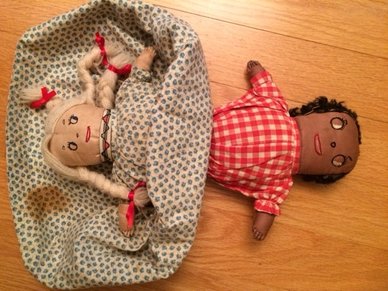
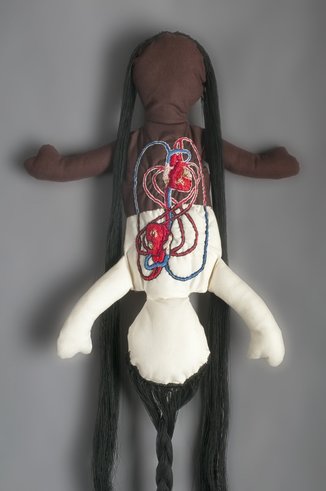

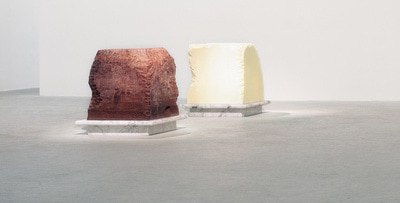
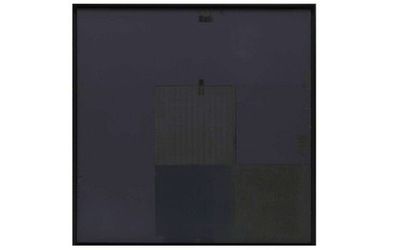
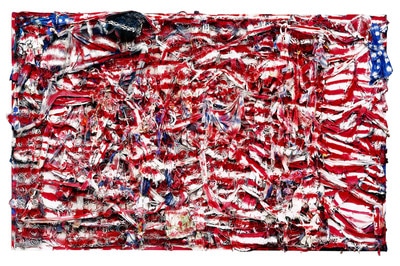


 RSS Feed
RSS Feed